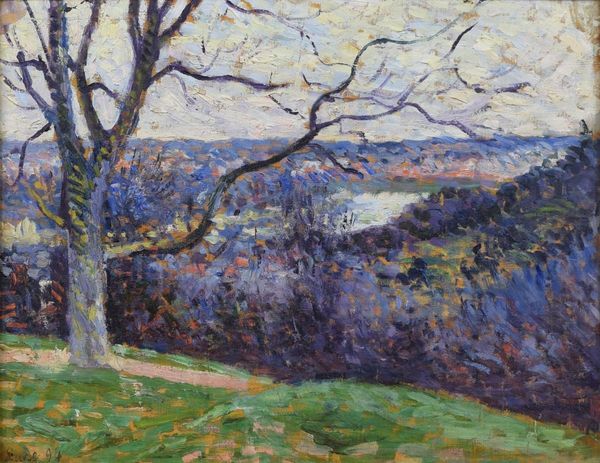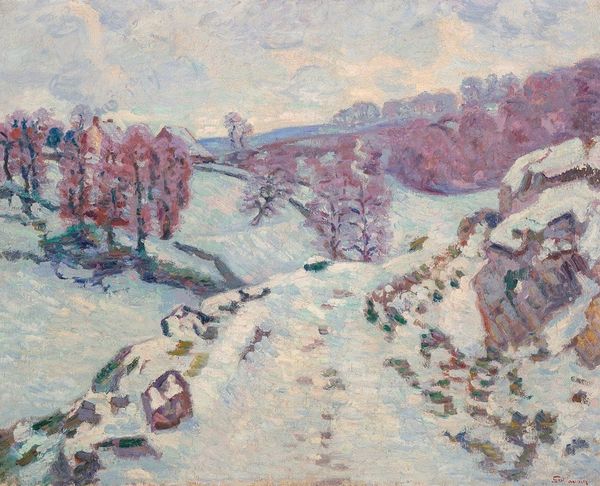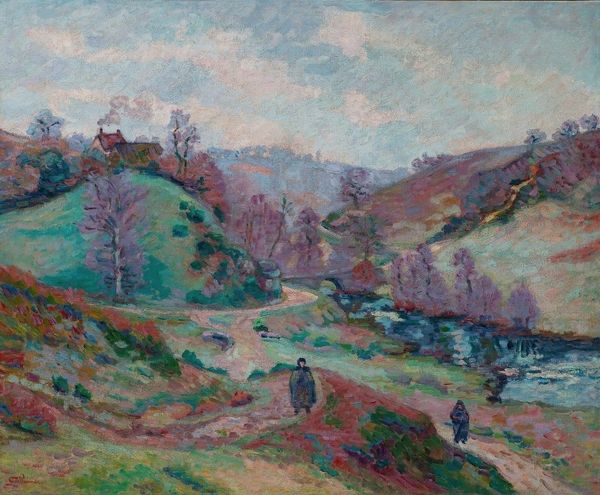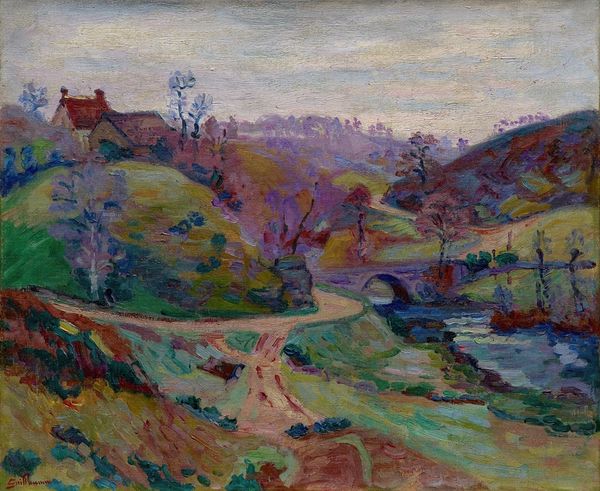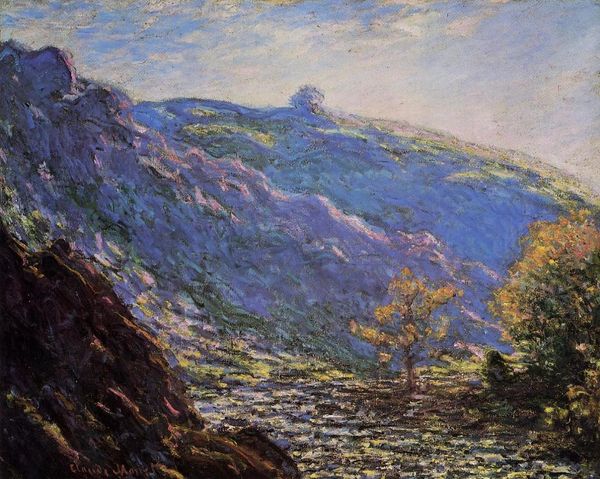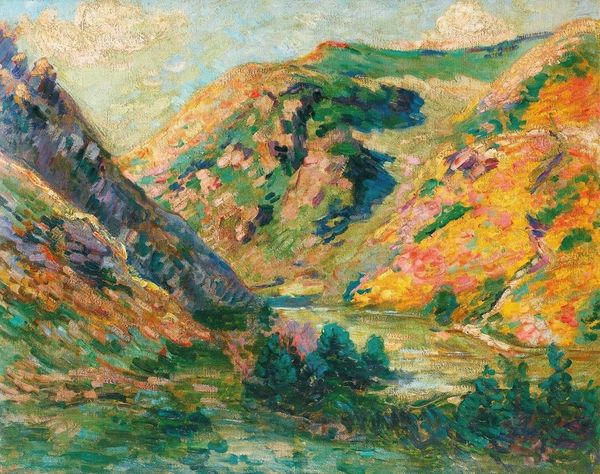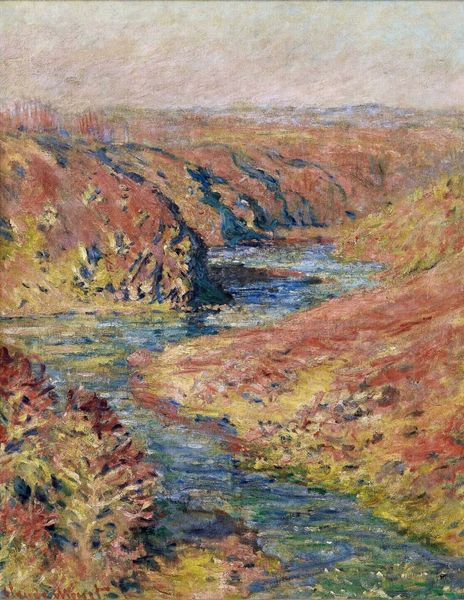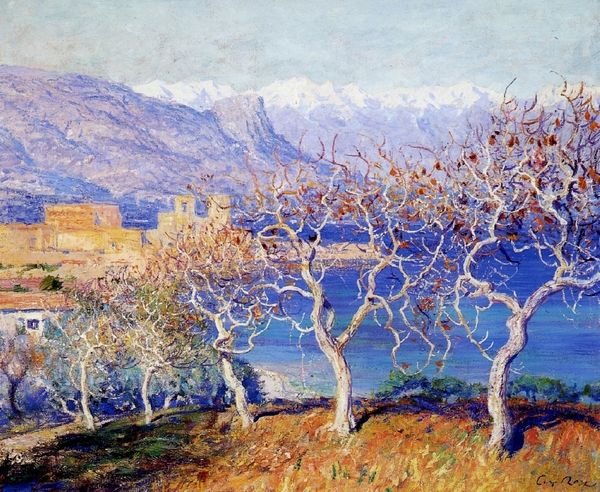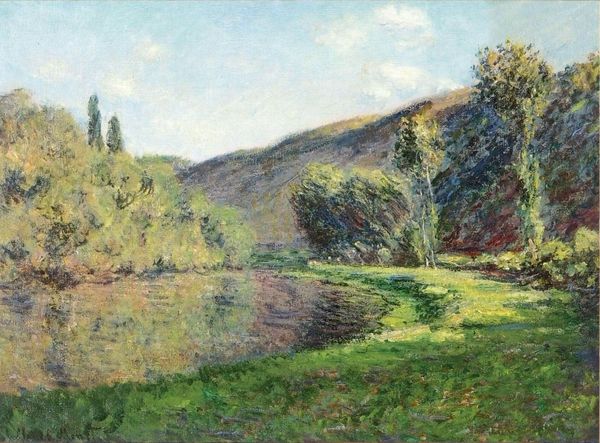
Copyright: Public Domain: Artvee
Curator: Here we have Armand Guillaumin's "Crozant," painted in 1902. This piece exemplifies the plein-air techniques favored by Impressionists of the late 19th and early 20th centuries. Editor: Wow, it's... rosy! Like the whole landscape is blushing. I'm getting a surprisingly warm feeling from this supposedly chilly scene. Curator: That's an astute observation. Guillaumin was a master of color, pushing beyond literal representation to evoke emotional responses. Consider the historical context. The Impressionists, breaking from academic traditions, sought to capture the fleeting qualities of light and atmosphere, rejecting conventional artistic norms of the time. Editor: Right. You can totally see him trying to nab the light before it bounces, right? It feels raw, less 'polished' in a way. And yet those colours... they feel deeply considered. Curator: Exactly. And this particular region, Crozant, held a significant place in the artistic landscape. It drew many artists seeking inspiration, including painters associated with the Crozant School, attracted to the landscapes of the Creuse valley. So we need to ask why? Was the rugged and relatively isolated scenery important to the aesthetic choices of the time? Was the 'natural' setting somehow symbolic? Editor: Maybe it was all about getting away from Paris. Trading salon debates for sketching outdoors. Less pressure. More… sunsets. Ha! You know, it makes me wanna be right there, squinting at the same light. I'm sure my version wouldn't be half as luminous, but hey, I'd try! Curator: The artistic pursuit, often intertwined with cultural and social resistance, is essential for the growth of social change. And the composition and palette is quite striking, especially regarding landscape art produced in a male dominated milieu. Editor: Thinking about it, you’re right! Those pinks… against that bright blue. There’s defiance, perhaps, in seeing tenderness and gentleness as strengths, not weakness. Thanks to that, it all feels so present and vivid. Curator: Ultimately, understanding the work in context enhances its resonance, allowing for broader considerations about gender, power, and art history as a whole. Editor: It definitely brings more depth. I came for the pretty colours, but left with a feeling. It's lovely when art grabs you like that.
Comments
No comments
Be the first to comment and join the conversation on the ultimate creative platform.

